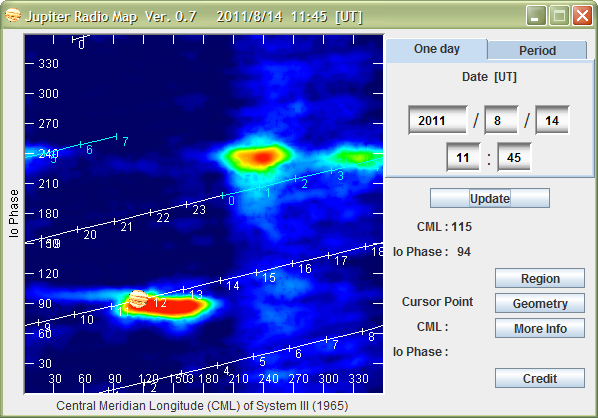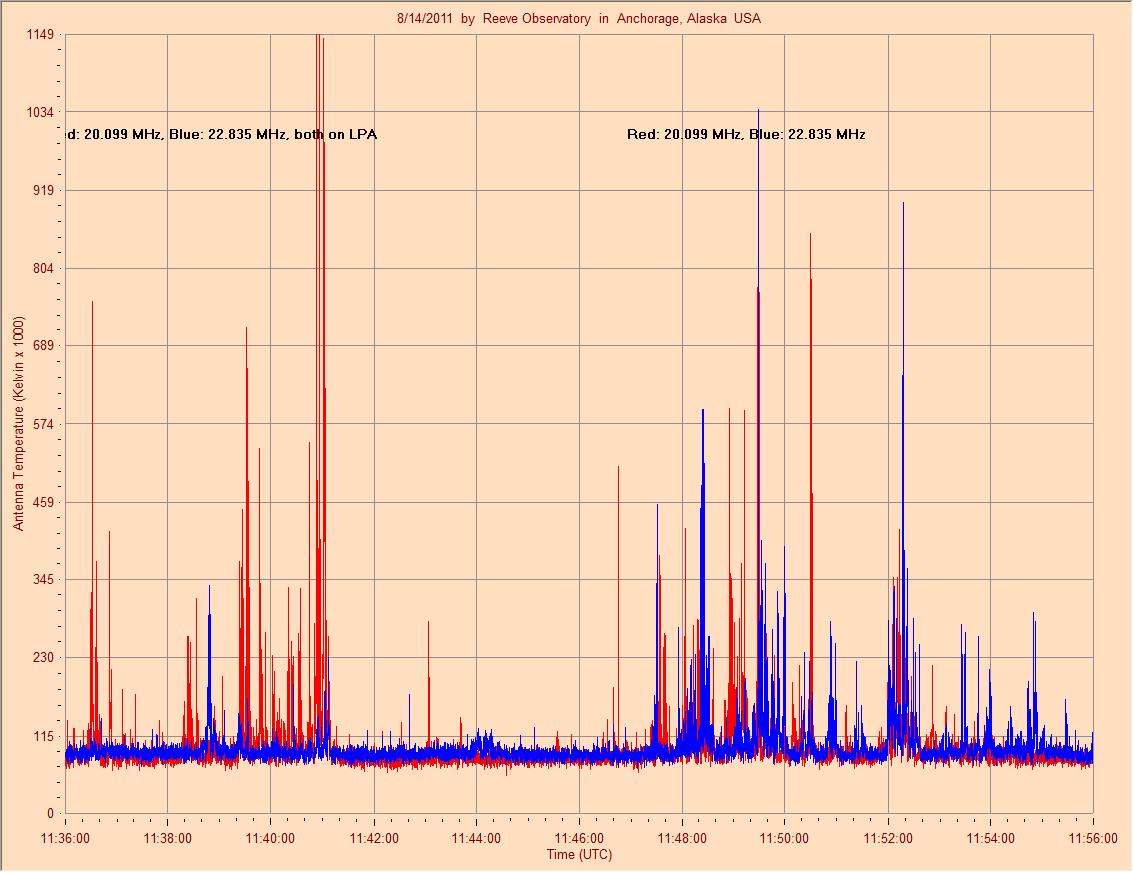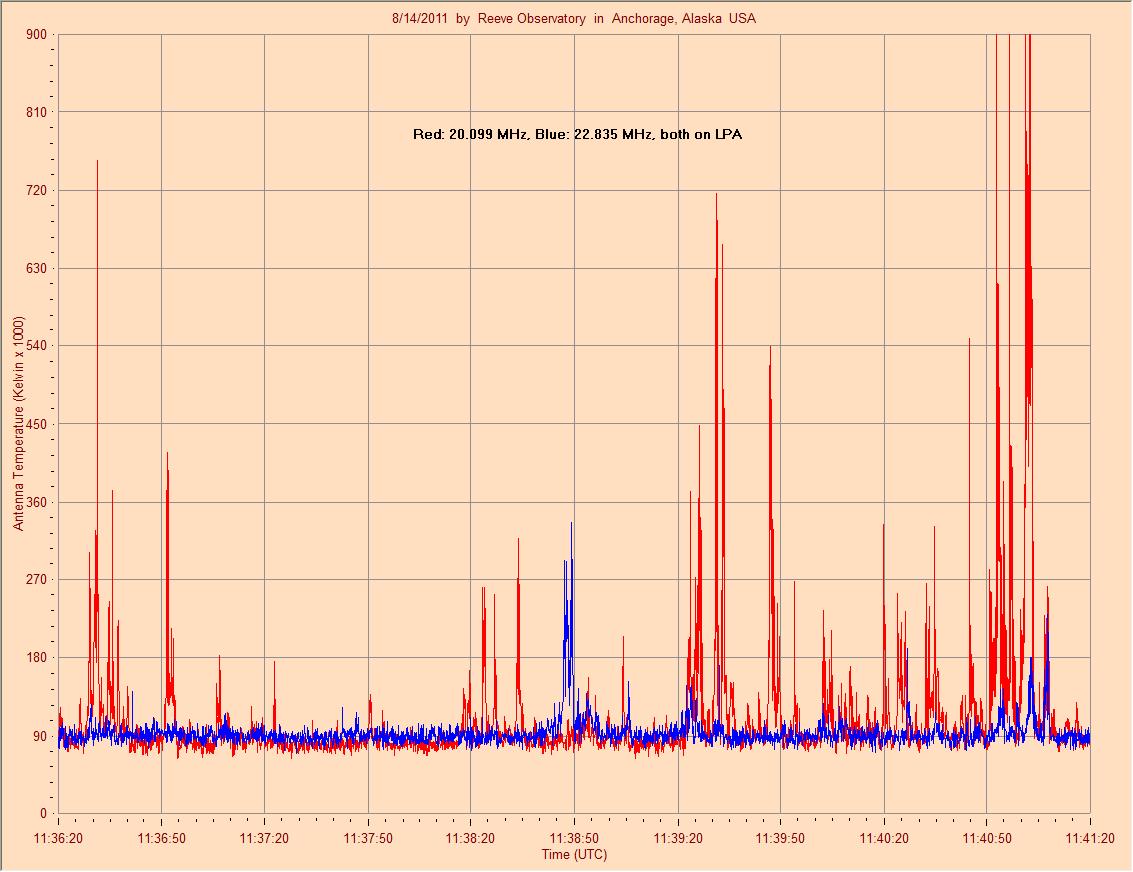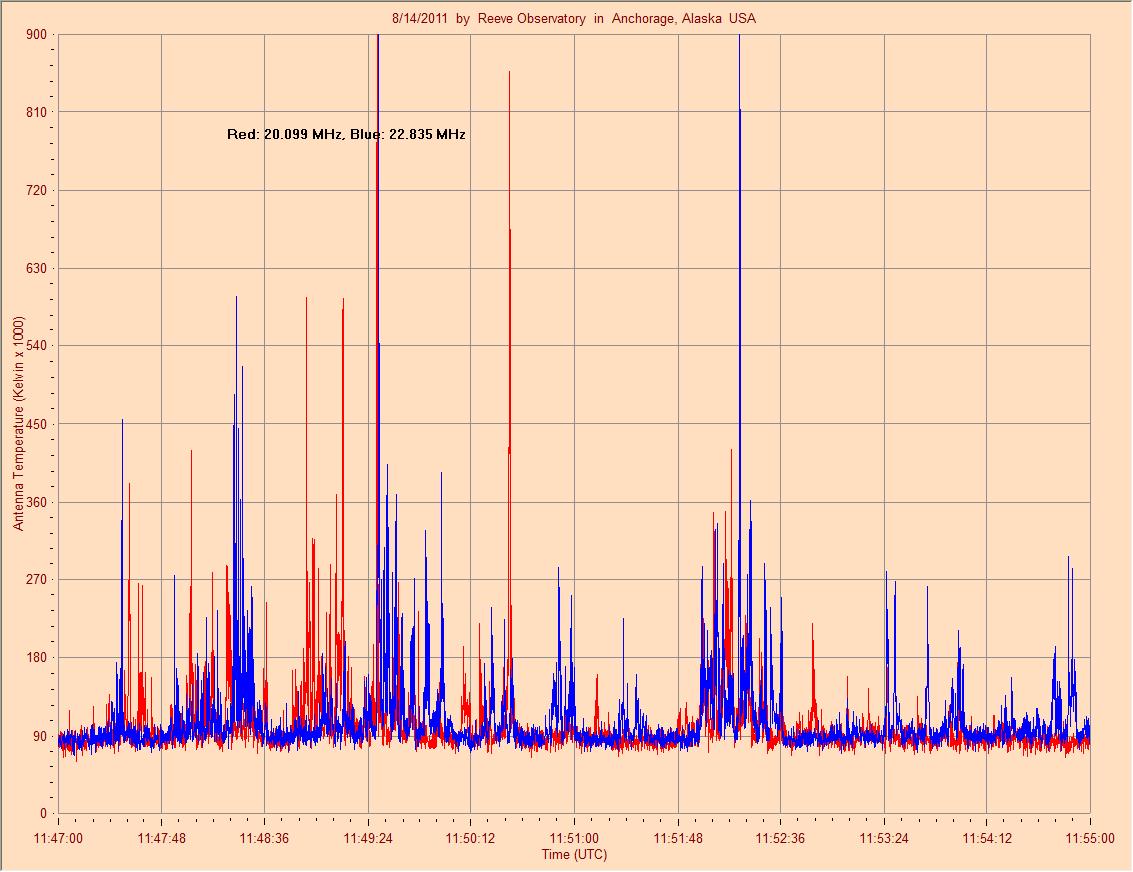Jupiter Io-B on 14 August, 2011
This was a night-time pass. We used two Icom R-75 HF Receivers, one tuned to 20.099 MHz (LSB), corresponding to the Red trace in the charts below, and the other tuned to 22.835 MHz (LSB), corresponding to the Blue trace. The receivers were connected to the antenna through a multicoupler. The antenna was an 8-element log periodic antenna pointed 120 degrees true (no tracking was used).
The Jupiter Radio Map immediately below is for reference and shows the orientation of the Io-B enhanced source at the observation time. The Radio SkyPipe charts show two bursting periods, one from 1136 to 1141 and another from 1147 to 1155. The first chart shows the overall period from 1136 to 1155 and the two following charts show each individual period. All times and dates are UTC. Short stereo sound files of the bursting are provided below the charts.
In the first period, bursting at 20.099 MHz predominated but in the second period bursting at 22.835 MHz predominated. Peak burst noise temperatures were about 1450k K at 20.099 MHz and 1034k K at 22.835 MHz. At the time of the charts Jupiter was at azimuth/elevation of approximately 127 degrees true and 33 degrees above the horizon.




Click here for a sound recording of bursting at 1139:36 UTC
Click here for a sound recording of bursting at 1139:50 UTC
Click here for a sound recording of bursting at 1141:05 UTC